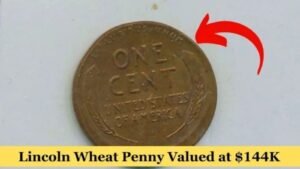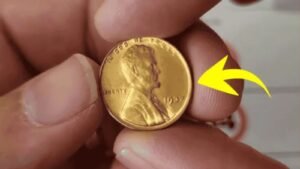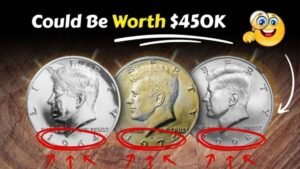Have you ever checked the coins in your wallet? One tiny 1981 Susan B. Anthony dollar could turn your loose change into a fortune worth $880,000. Yes, you read that right! These small silver-colored coins are still floating around in everyday circulation. Coin experts say a rare version from 1981 is making collectors go crazy. Stop tossing your change—start hunting today!
This guide breaks down everything in plain English. You’ll learn what makes this coin special, how to spot it, and why its value is exploding. No fancy jargon—just simple steps to cash in.
What Is the Susan B. Anthony Dollar?
The Susan B. Anthony dollar is a one-dollar coin the U.S. Mint made from 1979 to 1981, then again in 1999. It honors Susan B. Anthony, a leader in the women’s right to vote movement. The coin is small—about the size of a quarter—and looks silver, even though it’s made of copper and nickel.
Most of these dollars are worth exactly $1. But a handful of 1981 versions have tiny mistakes that turn them into treasures.
Why Is the 1981 Version Worth Up to $880,000?
In 1981, the Mint made three types of Susan B. Anthony dollars:
| Mint Mark | Location on Coin | Normal Value | Rare Error Value |
|---|---|---|---|
| P (Philadelphia) | None (blank) | $1–$2 | Up to $880,000 |
| D (Denver) | Tiny “D” under Susan’s neck | $1–$3 | $500–$5,000 |
| S (San Francisco) | Tiny “S” under Susan’s neck | $1–$5 | $100–$1,000 |
The jackpot is the 1981-P coin with a “Clear S” mint mark error. Workers at the Philadelphia Mint accidentally used a proof die (meant for shiny collector coins) from San Francisco. This created a super-sharp “S” on a regular circulation coin. Only a few dozen are known to exist.
Recent Auction Proof
- June 2024: One graded MS-67 sold for $540,000.
- October 2025: A perfect MS-68 example smashed records at $880,000.
Collectors predict prices will climb higher as fewer coins remain in pockets.
How to Spot the Rare 1981 Susan B. Anthony Dollar
Follow these easy steps—no magnifying glass needed at first!
Step 1: Find a 1981 Coin
- Look for “1981” on the front (obverse) below Susan’s chin.
- Ignore 1979, 1980, or 1999 coins for this hunt.
Step 2: Check for Mint Mark
- Flip to the front side.
- Look under Susan’s neck, just above the shoulder.
- No letter = Philadelphia (common).
- Tiny “D” = Denver (common).
- Tiny “S” = Jackpot alert!
Step 3: Examine the “S” (If You See One)
- The rare error has a crystal-clear, bold “S”—almost shiny.
- Compare to a normal 1981-S proof (you can Google images).
- Normal circulation “S” looks worn or filled in.
Step 4: Check Condition
- No scratches, dents, or dirt = higher value.
- Coins straight from bank rolls or cash registers often grade higher.
Where to Find These Coins Today
- Your Change Jar – Empty it on a table and sort by year.
- Cash Registers – Ask stores for dollar coins; many still give them.
- Bank Rolls – Request $25 rolls of dollar coins at your local bank.
- Flea Markets & Garage Sales – Sellers often dump jars for cheap.
- Vending Machine Returns – Some machines still spit out old dollars.
What to Do If You Find One
- Don’t Clean It – Wiping reduces value by thousands.
- Store Safely – Place in a plastic coin flip or sleeve.
- Get It Graded – Send to PCGS or NGC (costs $20–$300).
- Sell Smart – Use Heritage Auctions or eBay with certification.
Common Mistakes to Avoid
- Confusing Sizes: It’s smaller than a half-dollar but larger than a quarter.
- Ignoring Worn Coins: Even beat-up rare errors fetch $10,000+.
- Falling for Fakes: Counterfeits exist—always grade professionally.
Fun Facts About the Coin
- The Susan B. Anthony dollar was the first U.S. coin to feature a real woman (not Lady Liberty).
- People hated its size—confused it with quarters—so the Mint stopped making it after 1981.
- The 1999 comeback failed too, paving the way for golden Sacagawea dollars.




